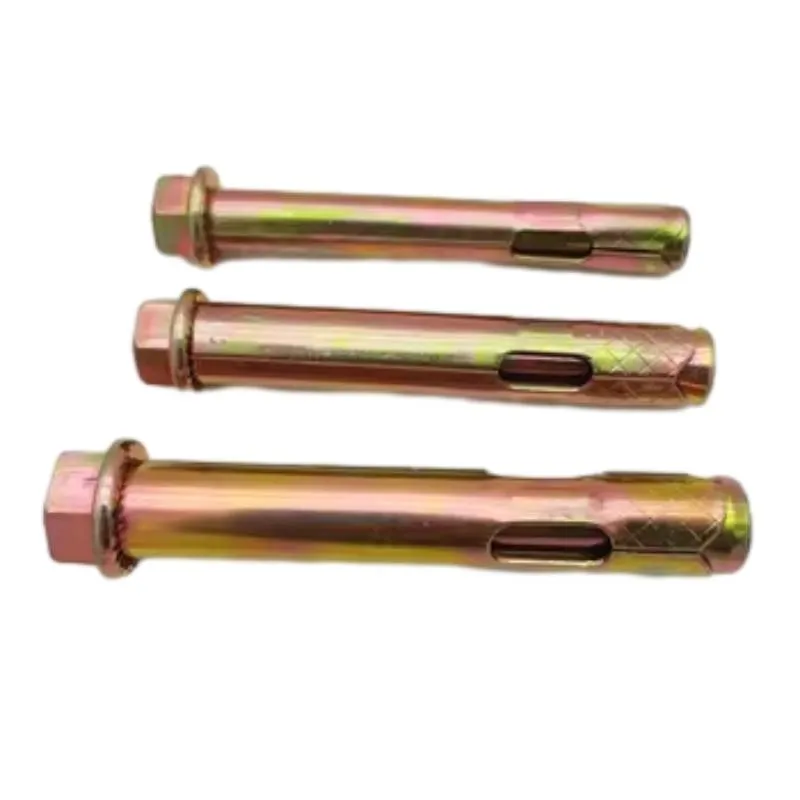Nov . 11, 2024 00:25 Back to list
Understanding M42 Threaded Bar Specifications and Applications in Various Industries
Understanding M42 Threaded Bars Applications, Benefits, and Specifications
Threaded bars are essential components in various engineering and construction industries. Among these, the M42 threaded bar stands out due to its specific dimensions and applications. In this article, we will delve into what M42 threaded bars are, their characteristics, uses, and the advantages they offer in various applications.
What is an M42 Threaded Bar?
The term M42 refers to the metric designation of the threaded bar, which defines its diameter, pitch, and other characteristics. Specifically, M indicates that it is a metric bar, and 42 specifies the nominal diameter of the bar in millimeters, which means the M42 threaded bar has a diameter of 42 mm. The threading allows for easy connection and integration with other components, making it a versatile choice for construction and mechanical applications.
In terms of threading, M42 bars typically follow the ISO metric thread standards. These standards govern the dimensions, tolerances, and pitch of the threads to ensure uniformity and compatibility across different applications and components.
Key Specifications
1. Material Composition M42 threaded bars can be made from various materials, including steel, stainless steel, and other alloys. The choice of material often depends on the required strength, corrosion resistance, and the working environment.
2. Strength Grades These bars are available in different strength grades. For example, common grades include 8.8, 10.9, and 12.9, which indicate the tensile strength and yield strength of the material. Higher grades provide increased strength and are typically used in more demanding applications.
3. Length Variability M42 threaded bars can be produced in varying lengths, allowing for flexibility in design and application. They can also be cut or machined to specific lengths as per project requirements.
4. Thread Pitch While the M42 specification primarily focuses on diameter, the thread pitch can also vary. Common pitches for M42 threaded bars include 1.5 mm and 2.0 mm, affecting how tightly the components can be fastened together.
Applications of M42 Threaded Bars
M42 threaded bars are utilized across different sectors due to their adaptability and strength
. Some of the primary applications includem42 threaded bar

1. Construction Used in reinforced concrete structures, M42 bars are often embedded within concrete to enhance tensile strength and stability in beams, columns, and foundations.
2. Heavy Machinery Due to their robust construction, M42 threaded bars are utilized in machinery assembly, particularly in heavy-duty equipment where high strength and durability are paramount.
3. Structural Engineering In structural applications, M42 bars are used as tension rods, providing support and stability to various structures, ranging from bridges to skyscrapers.
4. Manufacturing In manufacturing settings, M42 threaded bars can serve as fastening elements in assembly lines, where durable connections are essential for operational efficiency.
Advantages of M42 Threaded Bars
1. High Strength M42 threaded bars are engineered to withstand significant loads, making them suitable for demanding applications in construction and machinery.
2. Versatile Applications Their adaptable nature allows them to be used in an array of projects, ensuring compatibility with various fastening and anchoring systems.
3. Ease of Installation The threaded design facilitates quick and efficient installation, reducing labor time and costs.
4. Corrosion Resistance When made from stainless steel or corrosion-resistant alloys, M42 threaded bars can withstand harsh environments, prolonging their lifespan and reducing maintenance requirements.
Conclusion
M42 threaded bars are integral components in modern engineering and construction, offering a blend of strength, versatility, and efficiency. With their metric specifications ensuring compatibility across applications, they are a preferred choice for many industries. Understanding their characteristics, applications, and advantages not only aids in selecting the appropriate materials for projects but also emphasizes their significance in enhancing structural integrity and operational efficiency. Whether in construction, machinery, or structural engineering, the M42 threaded bar continues to play a crucial role in delivering robust and reliable solutions.


